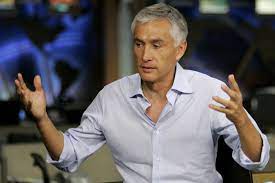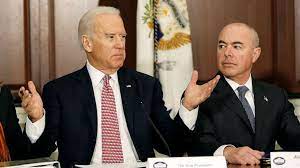November 25th, 2016 is a date more than two million Cuban Americans will never forget. Late that evening, they learned that brutal-turned-sickly dictator Fidel Castro, 90, had finally checked out of their world. In Miami, the epicenter of Cuban patriotism, hundreds of people poured into the streets. They cheered, danced, beat pots and pans, waved the Cuban flag, cried for joy and popped open champagne bottles. Calle Ocho was closed off to traffic as scores of citizens gathered in front of the famed Versailles Restaurant to celebrate what one witness described as “beautiful madness.” On Saturday morning, the crowds grew even larger.
While most politicians stayed away, they were quick to express their views on social media.
“History will remember Fidel Castro as an evil, murderous dictator who inflicted misery and suffering on his own people,” tweeted Florida Senator Marco Rubio.
New Jersey Senator Bob Menendez, whose parents like those of Rubio were born in Cuba, said Castro’s conduct will “haunt our hemisphere forever.”
In Cuba, the mood was subdued out of respect, and many of the island’s older residents recall that Fidel’s Revolution got off to a pretty good start. After sending Fulgencio Batista fleeing in the darkness of night in the early New Year hours of 1959, Castro quickly aligned his government with the once-powerful Soviet Union. Fidel embarrassed America during the Bay of Pigs invasion and became a taunting central figure in the Cuban Missile Crisis that gave him a certain level of importance. Russians gladly consumed the island’s sugar crop while Cubans studied medicine and engineering abroad in Soviet satellite states. Most importantly, Castro received $5 billion annually in subsidies from Moscow in its support of a Marxist regime in the west.
The fall of the Soviet Union in the early 1990’s, however, would prove to be a disaster for Castro. The U.S. Trade Embargo against Cuba was starting to take hold and the economy took a direct hit. Fidel became paranoid when protests erupted and his jails filled up quickly. Freedom of the press, if there ever was such a thing, ceased to exist. Fidel’s secret police were everywhere. Baseball players were also victims, and Cuban stars like Orlando “El Duque” Hernandez, Yasiel Puig and the late Jose Fernandez risked their lives in leaky boats for freedom and a better way of life. Through it all, this ruthless man with the shaggy gray beard and trademark cigar remained defiant, even though the fruits of grandeur had long soured.
Now that Fidel is gone, more change in Cuba is expected with younger brother Raulito, who is a bit less stubborn, running the show. But Miami-Dade County Mayor Carlos Gimenez isn’t so sure.
“Raul is still in charge and the people of Cuba are still not free,” says Gimenez.
That’s true.
Raulito has actually handled government affairs since 2006 when intestinal bleeding and a botched surgery permanently put Fidel on the sidelines. That being said, U.S. President Barack Obama saw an opening to the hoop with a new leader and after 18 months of negotiations, he scored a landmark diplomatic deal. Senator Menendez, a Democrat, has not been impressed though, and says that “lopsided concessions in U.S. policy towards Cuba have not led to an iota of positive changes in the way the regime rules or the Cuban people live.”
The real question for me is what happens in 2018 when Raulito retires and takes a long vacation in Mexico. Surely a power vacuum will erupt among his own people, even though there is plenty of time for a smooth transition. After all, men can do some strange things when competing to become the ultimate boss. One would think that Raulito’s right hand guy, 56 year old Miguel Mario Diaz-Canel Bermudez, would inherit the job. Diaz-Canel is well-educated, savvy with social media and has worked his way up the ladder. In a way, he’s the perfect modern leader to move Cuba forward. But Diaz-Canel is not a military man and doesn’t wield the influence of General Alvaro Lopez Miera, 72, the youngest of the original revolutionary guard.
Back in Miami, exiles there were quick to note the irony of Fidel’s death, which occurred on the anniversary of the Elian Gonzalez saga. On November 25th, 1999, the six year old Cuban boy was found clinging to a rubber inner tube by two fishermen off the coast of Fort Lauderdale. The boy’s mother, her boyfriend and others had all perished when their boat capsized at sea. Elian had relatives who lived in Little Havana and an uncle, Delfin Gonzalez, engaged in a nasty custody battle with the boy’s father, making the first grader an international pawn. This was perfect political theater for Fidel, who won the boys release when U.S. Attorney General Janet Reno sided with the father.
Upon his return to Cuba, young Elian became a poster boy for the Castro propaganda machine and later on, a tool for the Communist Party. Now 23, Elian would like to return to America for a visit and maybe take in a ball game. Not everyone in Little Havana thinks it’s a good idea.
“I wish him well over there, but it’s a different ideology,” opined a neighbor of Delfin Gonzalez. “I don’t want him coming back here.”
What seems to be a unanimous consensus among Cuban Americans from coast to coast is a burning desire for more freedom in their homeland, with better opportunities for family and friends. What comes next is anyone’s guess. None the less, closing the chapter on Fidel Castro gives folks a reason to be cautiously optimistic.
-Steve Randel…AP headline photo by Alan Diaz



